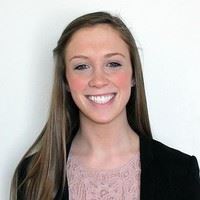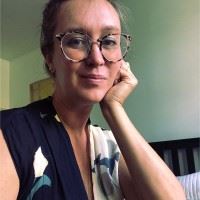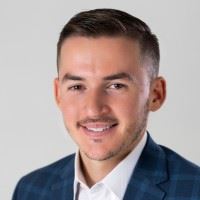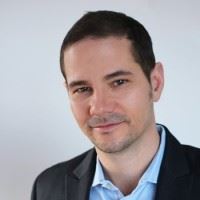New members have lofty goals to continue helping organization build and grow
By Steve Dwyer
The new Partnership Board members all have unique skills, ones sure to breath additional adrenalin into what’s already a build-and-growth-oriented organization with an eye on the future.
As new board members take their seat in 2023, the continually evolving vison to advocate for best-practices in brownfield redevelopment across New York City’s urban infill is sure to become more resounding.
The Partnership executive board of directors—starting with President Ezgi Karayel, Vice President George Duke, Treasurer Michele Rogers and Secretary Mari Cate Conlon—is excited to work with the new board members.
The newly minted board members are all poised to add firepower to the organization’s progressive-driven tapestry. Three of the four members recently shared their front-burner goals for 2023, challenges they’re most concerned about, and how they believe they’ll complement the skill sets of the entire board.




From left to right - Elizabeth Burgess, Lisa Bloodgood, Erik Draijer and Joel Rogers
Not available to shed light for this posting was newly minted board member Elizabeth Burgess, PE, Project Engineer at Langan Engineering & Environmental Services and holding a Master of Engineering/Systems Engineering form Cornell University. (We plan to catch up with Elizabeth in a subsequent blog post.)
Three board appointees recently chimed in about their goals: Lisa Bloodgood, Joel Rogers and Erik Draijer.
Bloodgood has navigated enormous changes in rezoning, land use and development. Bloodgood, an Adjunct Lecturer at Brooklyn College and former interim Executive Director for North Brooklyn Neighbors (formerly NAG), says she’s “thrilled to join the NYCBP board of directors,” and fully understands “how critical the State’s Brownfield and the City’s Voluntary Cleanup Programs can be to ensure that formerly contaminated properties are appropriately remediated for new uses and with the protection of human and environmental health as a top priority.”
Draijer, Project Manager for PVE Engineering LLC, New York, and a member of the BABA selection committee, is eager to “kickstart in-person events.” About the BABA’s, Erik says fellow committee members Victoria Whelan and Mari Cate Conlon have “passed the torch to me on event planning, and I’m eager to enhance the event—to show off to those involved and also those on the outside what the Partnership organization does so well.”
Rogers, who was persistent in bringing the Redevelopment Roundtable to the NYCBP, says “running and growing my company [President of Factor Group Inc.] is a full-time job. Most of the work we do is tied in some way to brownfields cleanup and redevelopment. I’m excited about stepping into a board-member role and the time I carve out for that will be focused on educating myself, my staff and the industry on brownfield redevelopment issues, and helping to advance meaningful advocacy goals of the Partnership.”
Brings New Perspective, Clear Voice
Bloodgood intimates that she “hopes my experience in community work brings a new perspective and a clear voice to the board amplifying the community experience, questions and needs throughout these processes,” she comments.
Much of the work of the brownfield community “is unknown to most residents. In the coming year I would like to support efforts to proactively and effectively share information between the board and a broad spectrum of New Yorkers.”
“I am also eager to join with other board members in supporting the Abbey Duncan Scholarships for undergrad and grad students in the NYC region. I was a recipient as an undergrad and know firsthand how valuable the financial and network opportunities can be to students pursuing careers in environmental science, geology, engineering and the like.”
Bloodgood also is eager to bring insight gained from her work on the Board “to my students at Brooklyn College where I teach courses in Urban Sustainability,” she says.
COVID Interrupted Plans
With PVE, Draijer had become the first project manager with the company to have a significant stake in growing its New York City network. “I continue to learn the industry, and the Partnership was a real easy way to enable that—learning from competitors and colleagues,” he says. “In 2019 I started to attend as many Partnership Roundtables as I could. I connected with Mary Cate [Conlon] and signed up to get involved across several committee levels. Then Covid hit and squashed those plans temporarily. I was able to resume involvement in later 2021 and into 2022.”
When asked what stood out about last year’s BABA projects, Draijer says from “it’s clear that the global pandemic had an effect on local brownfield redevelopment. As the industry was able to progress through COVID’s impacts, it was clear that plenty of new opportunities were created in commercial real estate. Reviewing the nominations and awarding these projects is yet another tool for our industry and community to understand if and how the pandemic has changed the market,” comments Draijer.
He emphasized that one aspect that hasn’t changed is the desire on the part of everyone involved in these projects “to produce a positive impact for the community, economy and environment. It’s truly a pleasure to be involved and to experience that desire from fellow mentors, clients, competitors, and colleagues.”
Draijer says that more brownfield developers need to know about their eligibility for project funding across the spectrum of grants, loans and tax credits. Having a greater number of Partnership events, both in-person and remotely, can help developers get a grasp about what they’re eligible for—unbeknownst to them.
“It’s not always easy for them to see the benefits of the voluntary cleanup program [VCP]—many take a cautious approach. We want to spread the knowledge to developers who are not ‘in the know’ about how they can use the brownfield tax credit money and not view it as a ‘catch,’” Erik states.
Draijer notes that it has been “impressive to learn about projects that create state-of-the-art logistics centers and industrial assets from underutilized, contaminated land. Affordable housing, along with green space, has been a focus since I became involved. There may have been an increase in affordable housing projects [in 2022] as NYC’s 421-a tax exemption program expired [June 2022]. We could see the carry-over through 2024 as these projects continue towards completion, but it’ll be interesting to see if and how it changes the industry moving forward.”
Grasp All Moving Parts
Rogers says this time “is arguably one of the most dynamic periods in brownfield redevelopment history, as key environmental and brownfield regulations and guidance are in the process of being revised—and not just in New York.”
Joel says that changes range from technical implementation, to new regulations around emerging contaminants, to funding and tax credits, to renewal and authorization of brownfield related laws. “The challenge is to understand the implications of all the individual moving parts and how they affect the overall success of brownfield policies in New York City and beyond, and then to use our platform and advocacy to push for meaningful change where it is needed,” he says.
Speaking about working with new and existing NYCBP board members—how they complement his skills from a professional standpoint—Rogers states that he appreciates the Partnership’s diverse group of experts with backgrounds in environmental consulting, engineering, law, property development, tax credits, affordable housing, regulatory agency work, and public policy.
“No matter what our individual areas of focus, brownfields issues tend to dovetail across other areas, and you need that deep bench of experience to holistically understand and address challenges as brownfields policy and implementation evolves,” he says. “I started in the mid-90s as an environmental engineer, and refocused later in my career on brownfield redevelopment, environmental waste management and beneficial reuse of regulated soils. Interestingly that often involves managing removal of contaminated waste streams from brownfield cleanup sites, and beneficially reusing them on former industrial properties undergoing brownfield redevelopment. I hope to continue to contribute niche, multi-state, real world experience to the team.”
Joining NYCBP around a decade ago, Joel suggested the Partnership look at hosting a regular roundtable-style event where expert presenters could share and discuss ideas, news and regulatory changes with membership of industry professionals.
“It wasn’t a novel concept: CIANJ’s Environmental Business Council invented the model in New Jersey. But it wasn’t being done anywhere in New York, and it seemed like a great idea. We let the EBC know that we were going to borrow from its success and invited them to the first NYC Roundtable”
That’s when NYCBP Executive Director Sue Boyle, who never forgot about the idea, “nudged me over the years until we finally put together the three time a year NYCBP Redevelopment Roundtable series. As the Solid & Hazardous Waste Committee co-chair and presenter, I have stayed involved with that since inception and won over many skeptics. It's a great event.”
Posted February 7, 2023